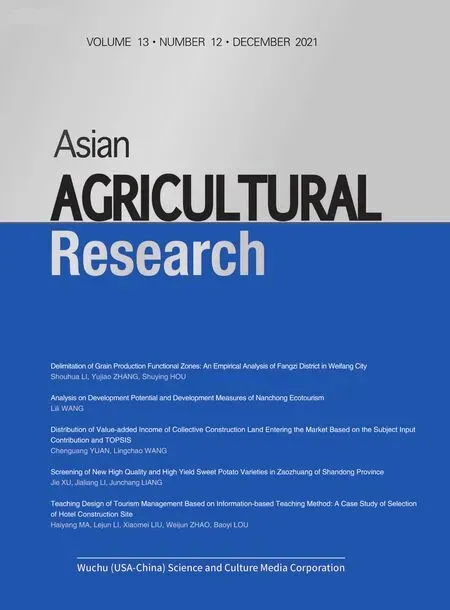Analysis on the Status Quo of the Public Space in Dashiyuan Community in Nanchang City and Its Renewal Strategies from Multiple Perspectives
2021-02-17HaifangHERongtaoSHENKanZHENGPenghuiZHU
Haifang HE, Rongtao SHEN, Kan ZHENG, Penghui ZHU
College of Urban Construction, Jiangxi Normal University, Nanchang 330022, China
Abstract From the perspective of big data such as Baidu heat map and GIS kernel density analysis, this paper analyzed the gathering situation of residents of Dashiyuan at different times and the use of public service facilities, as well as problems existing in the old community of Dashiyuan in Nanchang City, and put forward targeted recommendations.
Key words Old community, Public space, Renewal, Dashiyuan
1 Introduction
After the reform and opening up, with the vigorous development of the national economy and society, incremental planning has always been the mainstream of planning and development, and the expansion of urban areas and the establishment of development zones are manifestations of the implementation of incremental planning in geographical space. With people’s need for sustainable development and high-quality development of stock land, old communities have gradually entered the field of vision of scholars (Fig. 1). In November 2019, the General Office of the Nanchang Municipal People’s Government announced theNotice
on
Printing
and
Distributing
the
Implementation
Plan
for
the
Reconstruction
of
Old
Communities
in
Nanchang
, and launched the "1+5+X" model, namely the construction of neighborhood centers, health services, cultural and sports activities, home care, nursery, business and other public service facilities that meet the needs of communities. In July 2020, the General Office of the State Council issued theGuiding
Opinions
on
Comprehensively
Promoting
the
Reconstruction
of
Old
Communities
in
Urban
Areas
. The "Opinions" clarifies that the transformation of old urban communities can be divided into three categories: basic, improving, and renewal; and it is pointed out that central financial funds will focus on supporting the transformation of old communities built before the end of 2000, and appropriately support other old communities, and local governments need to reasonably implement the responsibilities of residents’ capital contributions. Due to the needs of community residents and the guidance of relevant policies, related research on the transformation of old communities is showing a trend of rapid growth.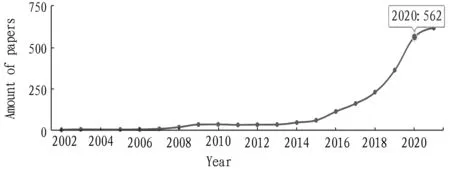
Fig.1 The overall trend of publication of the "old community" literature in HowNet
2 Study area
We visited Dashiyuan, focusing on the investigation in Dashiyuan North Community. Dashiyuan is located in Donghu District, adjacent to Ganjiang River in the west and Bayi Bridge in the northwest, overlooking Tengwang Pavilion in the southwest, and Jiandeguan and Yangming Park subway station in the southeast and northeast, respectively. The traffic and historical heritage are superior. It covers an area of about 23 ha and has a population of about 20 000. According to an interview with the Dashiyuan North Community Party and Mass Community Service Center, the current population of Dashiyuan North Community is about 4 680 people, and the number of households is 2 281. Elderly people over 60 account for about 70% of the community, and children aged 12 (elementary school) and below account for about 20%. Because young and middle-aged people are relocated to new urban areas such as Honggutan, there are fewer young and middle-aged people in the community.
Dashiyuan North Community is mainly enclosed by Yangming Road in the north, Shengli Road in the east, Banbu Street in the west and Dashiyuan Street in the south. There are no public parking lots, and only on-street parking spaces are set by Banbu Street, so the parking conditions in the community are poor (Fig.2). The current public service facilities in Dashiyuan North Community mainly include a party and mass service center, cultural and sports activity centers, elderly service centers, a primary school, a kindergarten, and health service stations. The party and mass activity center covers an area of about 200 mand has three floors; the primary school has 6 grades with 3 classes for each grade; and the kindergarten has 8 classes with a total of 200 students.
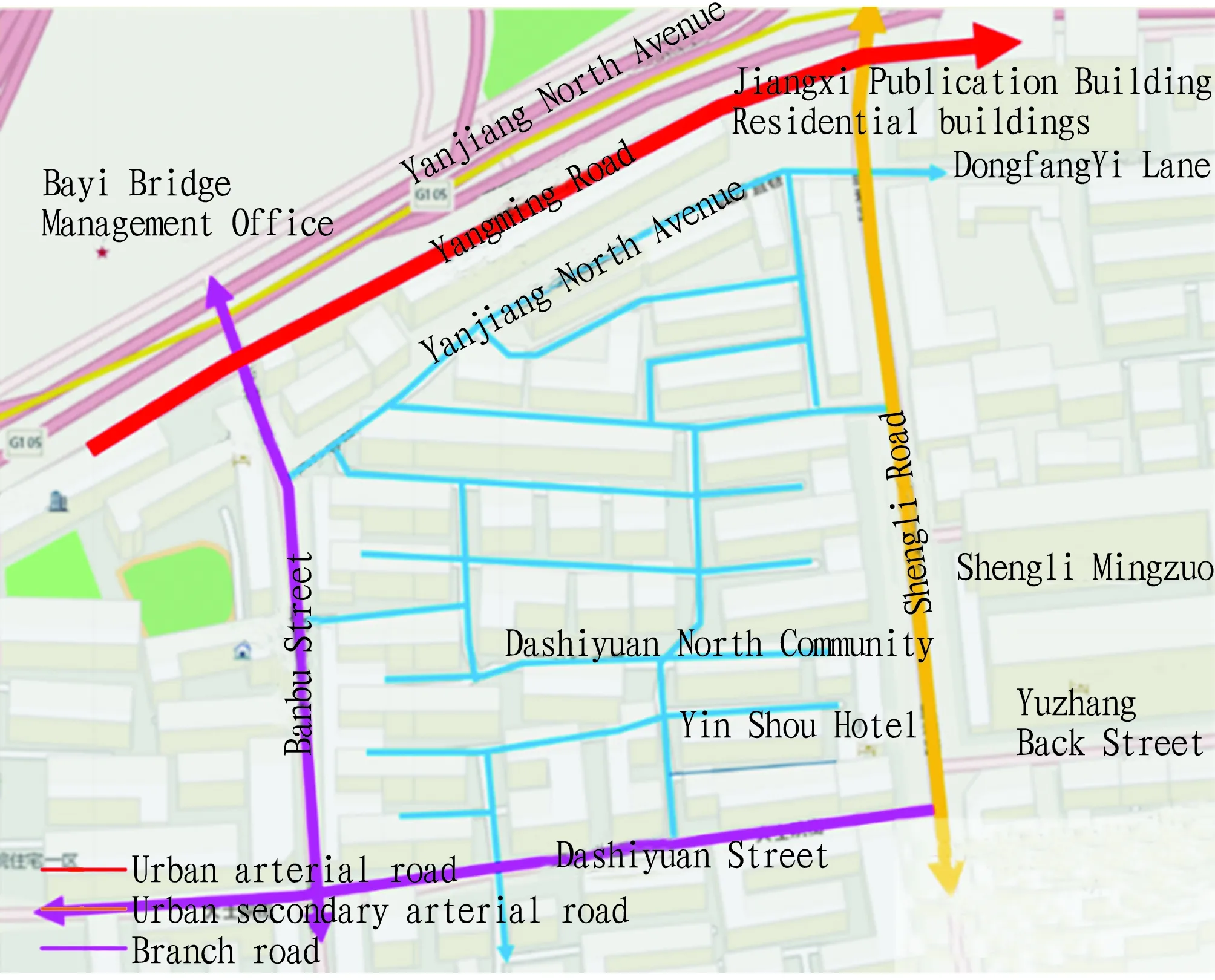
Fig.2 The current road map of Dashiyuan North Community
3 Spatio-temporal analysis of residents’ activities from the perspective of big data
3.1
Spatio-temporal
analysis
based
on
Baidu
heat
maps
Based on the geographic location data of mobile phone users on the LBS platform of Baidu map heat map, the distribution of people in the city can be described in real time through different color blocks superimposed on the network map. In this paper, we attempted to use Baidu heat maps as a tool to analyze the population aggregation at different times in the old community of Dashiyuan, Nanchang City (Fig.3).It can be seen from the heat maps: (i) during the night rest, the areas with strong activity intensity are consistent with the location of residential land, the activity intensity in commercial concentrated areas is weak, and the activity intensity in the intersection of Dashiyuan Road and Banbu Street is the strongest; (ii) from 7:00 to 9:00 in the morning, the activity intensity in Shengli Road, Yangming Road, Dieshan Road, and the park zone in Dashiyuan North Community gradually increases, and it begin to be relatively stable; (iii) at noon, the activity intensity in the northern part of Rongmen Road increases temporarily; and (iv) in the afternoon to evening, the activity intensity gradually weakens in the park zone of Dashiyuan North Community, gradually increases in the Dieshan Road zone, and shows a trend of weakening, strengthening, and weakening again on Yangming Road.
It can be seen from the figure that catering services are mainly distributed at the intersection of Yuzhanghou Street, Dashiyuan Street and Banbu Street; leisure and entertainment facilities are mainly distributed at the intersection of Shengli Road and Dieshan Road; medical service facilities are mainly distributed in Yangming Road, Dieshan Road and Shengli Road; and other service facilities are mainly distributed in Banbu Street and Dashiyuan Street.
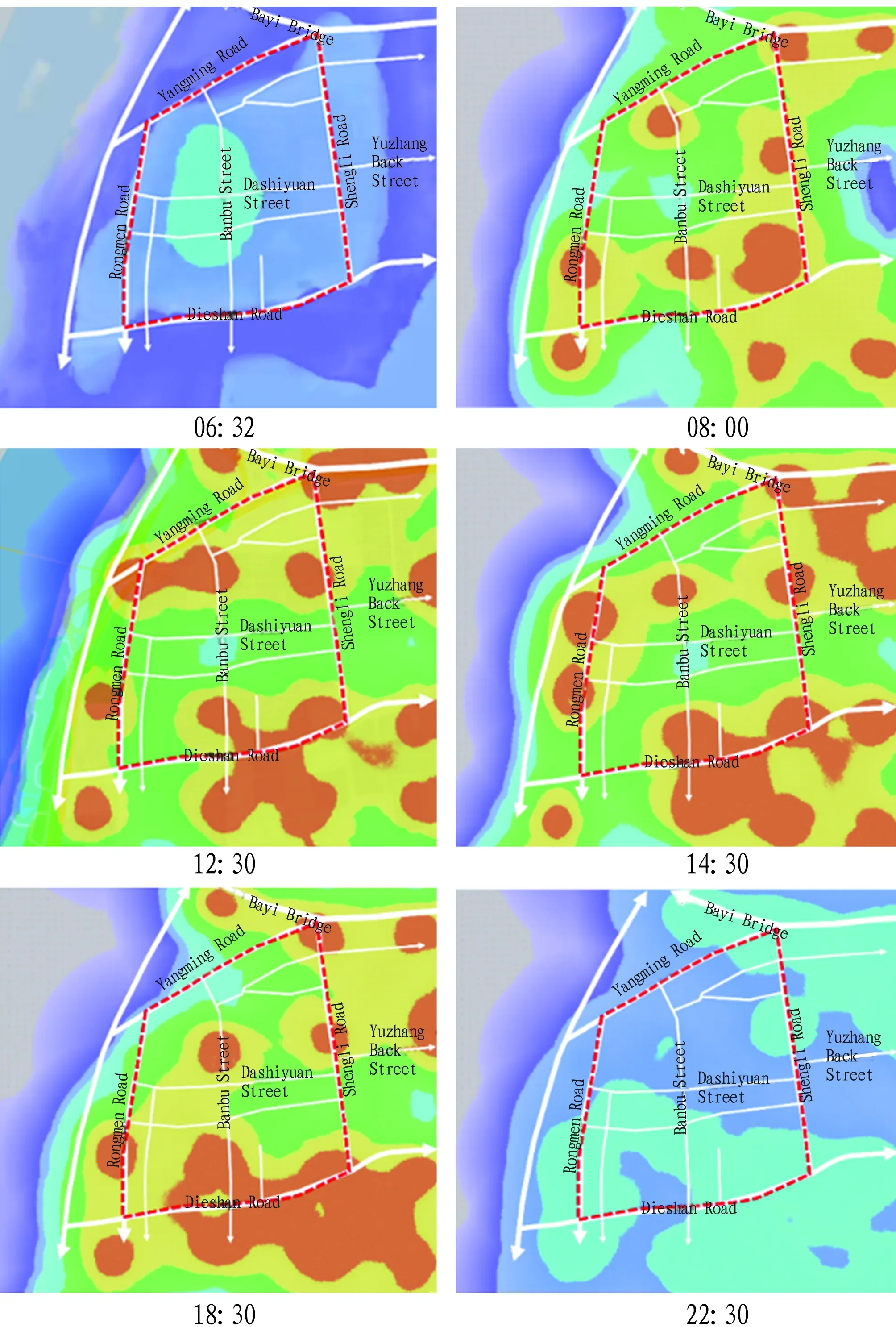
Fig.3 Baidu heat map at each time period of Dashiyuan
3.2 Facility kernel density analysis based on GIS
Kernel density analysis is mainly used to calculate the density of elements in the surrounding neighborhood. The surface value of the point is the highest, and as the distance from the point increases, the surface value gradually decreases. The density of each output raster pixel is the sum of the values of all kernel surfaces superimposed on the center of the raster pixel.In this study, we collected Baidu POI data and divided it into the following four categories: (i) the catering category, for which a total of 200 POI data points were collected, including breakfast shops, restaurants, cafeterias, nightclubs,etc.
; (ii) the leisure and entertainment category, for which a total of 77 POI data points were collected, including chess and card rooms, internet cafes, pedicure shops, movie theaters, mahjong halls, health centers,etc.
; (iii) the medical facility category, for which a total of 96 POI data points were collected, including Chinese and Western medicine clinics, dental clinics, maternal and child health care centers, community health service stations, pharmacies, veterinary hospitals, and various private clinics,etc.
; and (iv) the category of other life services, for which a total of 154 POI data points were collected, including automotive repair shops, barber shops, mobile phone business halls, photo studios, primary and secondary schools,etc.
The data were identified and subjected to kernel density analysis, respectively, and corresponding grid maps were obtained (Fig.4).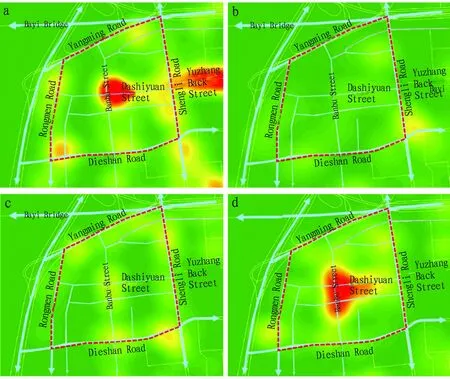
Note: a. Kernel density analysis of catering; b. Kernel density analysis of leisure and entertainment; c. Kernel density analysis of medical facilities; d. Kernel density analysis of other life services.
The intensity of activities during dining hours in Yuzhang Back Street and the southeast of Dieshan Road is relatively high; the temporary increase in activity intensity at noon on Rongmen Road is due to the influence of catering facilities; although Dieshan Road is equipped with certain dining facilities, it is less attractive at noon; and the distribution of medical facilities has a weak influence on the intensity of community activities; and the park of Dashiyuan North Community is relatively stable from 9 am to 10 pm.
4 Various crowd activities from the perspective of behavior
Human behavior occurs in a certain environment, and corresponding relationship with the environment is formed, forming certain characteristics. To explore the space environment suitable for the elderly, it is necessary to study the behavior and characteristics of people in the environment. Different groups have different social relations, and their behaviors and activities in Dashiyuan Community are not the same. This section uses a simple scene narrative method to describe the behavior and activities of each group in Dashiyuan Community and its surroundings, mainly including students, youth, and elderly groups. In this section, we used a simple scene narrative to describe the behavior and activities of various groups in Dashiyuan Community and its surroundings, mainly including students, youth, and elderly groups. Kindergarten students are mainly transported to and picked up from class by parents using electric vehicles. There is a flower bed terrace at the entrance of the kindergarten, and the gate opens to the west. The kindergarten is located in the alley of Dashiyuan North Community, so it is safer. There is a seven-storey residential building on the south side, which strongly shields the sunshine of the kindergarten, but it can provide shade for kindergarten students’ parents at noon. The lack of protective design in the inner corners of the kindergarten poses a certain safety hazard to children. There are sporadic parents who drop and pick up elementary school students to and from class, and older students choose to walk home on foot. The entrance of the elementary school is facing the community road called Banbu Street, and there is a buffer space between the entrance and the street. There is a roadside parking lot on Banbu Street, and parents who send and pick up students park electric cars under the shade of trees. Although there are stone piers for the parents to rest, the usage rate of the stone piers is not high. The playground of the primary school is located in the south, and the sunshine in the teaching building area is satisfactory.
According to surveys and interviews, most of the young people in Dashiyuan chose to move to the new urban area of Nanchang City, such as Honggutan and Jiulong Lake. As the smallest group in Dashiyuan, young people mainly appear in commercial and transportation spaces of the old community in social roles such as parents, shop owners, plumbers, and men for takeaway. Young people have a greater demand for transportation and parking, and except for parking on the roadside of Banbu Street and parking at the bottom of the viaduct around Dashiyuan, there are no other parking spaces. We learned from visits that current commercial formats of the community are very mixed, and the vacancy rate is not high. The bottom is usually used for commerce and the upper floor is used for residence. Few businesses are located on the second floor and above. Because they are in the old city, commercial resources and living facilities are relatively abundant. In addition to work, young people’s travel scales for behavioral activities such as picking up children and shopping are relatively small. Currently, young people are mainly engaged in the service industry locally, and they are more willing to choose electric vehicles or shared bicycles to travel in the old city. The elderly are the largest social group in the old community and the group that deserves the most attention. In addition to daily life activities, such as reading books and newspapers, cooking, watching TV, growing flowers,etc.
, many elderly people are eager to communicate with others in outdoor public spaces, and like to participate in social activities, such as walking, sunbathing, chatting, bodybuilding, dancing, chess,etc.
The elderly in the community spend a lot of time and energy every day with relatives, friends and neighbors in various leisure and entertainment activities to enrich their spiritual life.5 Renewal strategies of public activity space
5.1 Considering the behavioral needs of different groups of people
The old community is made up of people of different occupations and ages, and the differences in the people will make the behavior and activities express rich diversity. In the design of outdoor communication space of Dashiyuan, it is necessary to comprehensively consider the behavioral needs of different groups ofpeople and focus on the daily transportation, recreation, cultural and entertainment needs of the elderly and children’s needs for games and bodybuilding.
For the elderly, their life quality in public spaces can be improved by strengthening zebra crossing guidance and road isolation protection at the intersection of Shengli Road and Yangming Road, strengthening bus route signs at various bus stops, strengthening the leveling of the entrance site and barrier-free facilities in the commercial space of Dieshan Road, and setting chess and card seats, gateball courts and other special venues in the park under the overpass of Bayi Bridge. For children, it is necessary to strengthen the green space and daily sunshine level of Bayi Kindergarten to create a creative and interesting place for activities.
5.2 Creating a space for positive interactions
The old community needs to create a space for active communication. A space environment of harmony and friendly communication between neighbors is the starting point and goal of creating a space for active communication. For example, setting up resting seats in the park under the overpass of Bayi Bridge, painting the bridges and piers without destroying the bridge, and using vegetation to create semi-private communication areas can create a sense of place that is conducive to the occurrence of communication among residents.6 Conclusions
An in-depth understanding of the distribution of public service facilities in old communities, the situation of time and space gathering and the daily behavior of residents is an important part of the renovation and implementation of old communities. The transformation of old quarters cannot be the same as that of newly-built residential quarters, and effective transformation strategies and specific measures must be put forward based on problems existing in old communities.
杂志排行
Asian Agricultural Research的其它文章
- Research and Application Progress of Silk Fibroin Membranes
- Application Potential of Quinoa as Forage
- The Agriculture-Tourism Integration to Promote the Rural Revitalization: Taking Tea Industry-Agriculture-Tourism in Lishui City as an Example
- Delimitation of Grain Production Functional Zones: An Empirical Analysis of Fangzi District in Weifang City
- Research on the Curriculum Construction by Promoting Teaching Using Competition Based on Bloom’s Taxonomy of Educational Objectives
- Effects of Fermented Nano Chinese Herbal Medicines Replacing Antibiotics on Production Performance and Carcass Quality of Growing-Finishing Pigs
